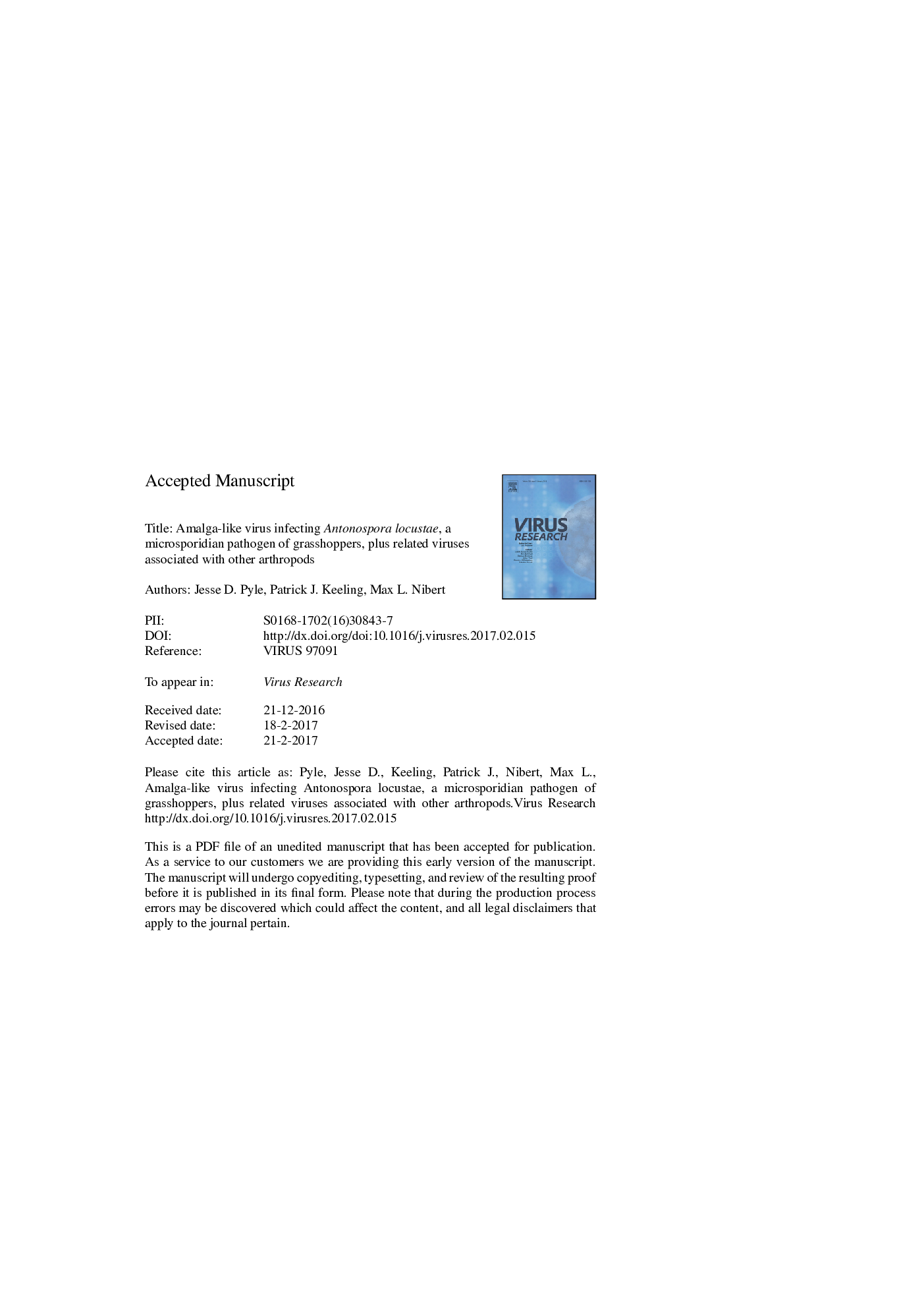| Article ID | Journal | Published Year | Pages | File Type |
|---|---|---|---|---|
| 5675546 | Virus Research | 2017 | 41 Pages |
Abstract
A previously reported Expressed Sequence Tag (EST) library from spores of microsporidian Antonospora locustae includes a number of clones with sequence similarities to plant amalgaviruses. Reexamining the sequence accessions from that library, we found additional such clones, contributing to a 3247-nt contig that approximates the length of an amalga-like virus genome. Using A. locustae spores stored from that previous study, and new ones obtained from the same source, we newly visualized the putative dsRNA genome of this virus and obtained amplicons yielding a 3387-nt complete genome sequence. Phylogenetic analyses suggested it as prototype strain of a new genus in family Amalgaviridae. The genome contains two partially overlapping long ORFs, with downstream ORF2 in the +1 frame relative to ORF1 and a proposed motif for +1 ribosomal frameshifting in the region of overlap. Subsequent database searches using the predicted fusion protein sequence of this new amalga-like virus identified related sequences in the transcriptome of a basal hexapod, the springtail species Tetrodontophora bielanensis. We speculate that this second new amalga-like virus (contig length, 3475 nt) likely also derived from a microsporidian, or related organism, which was associated with the springtail specimens at the time of sampling for transcriptome analysis. Other findings of interest include evidence that the ORF1 translation products of these two new amalga-like viruses contain a central region of predicted α-helical coiled coil, as recently reported for plant amalgaviruses, and transcriptome-based evidence for another new amalga-like virus in the transcriptome of another basal hexapod, the two-pronged bristletail species Campodea augens.
Related Topics
Life Sciences
Immunology and Microbiology
Virology
Authors
Jesse D. Pyle, Patrick J. Keeling, Max L. Nibert,
